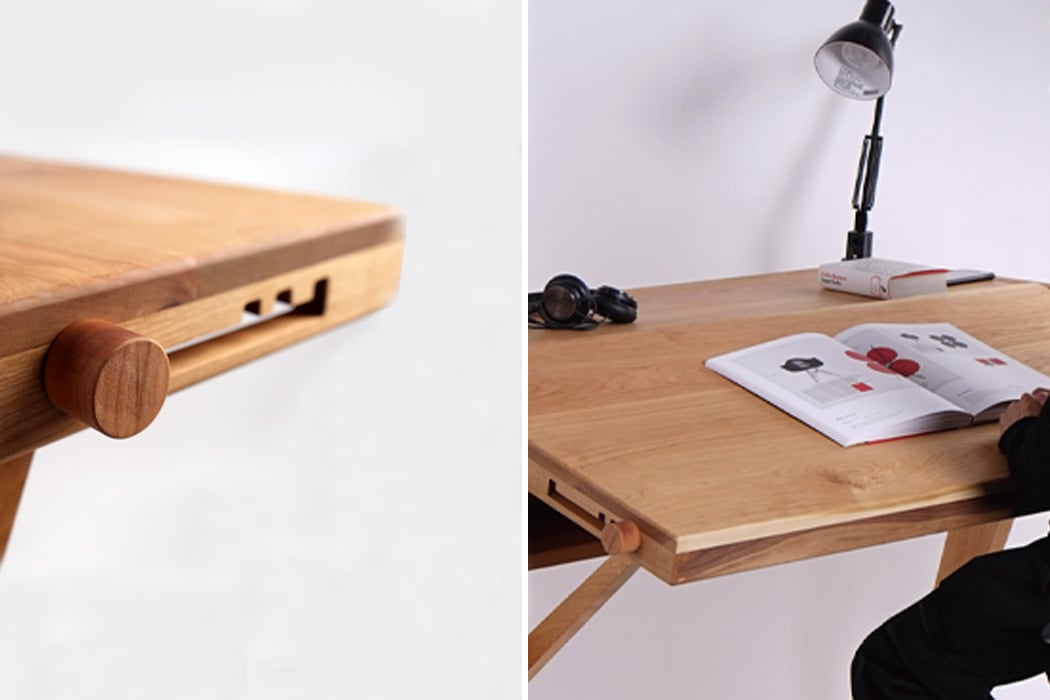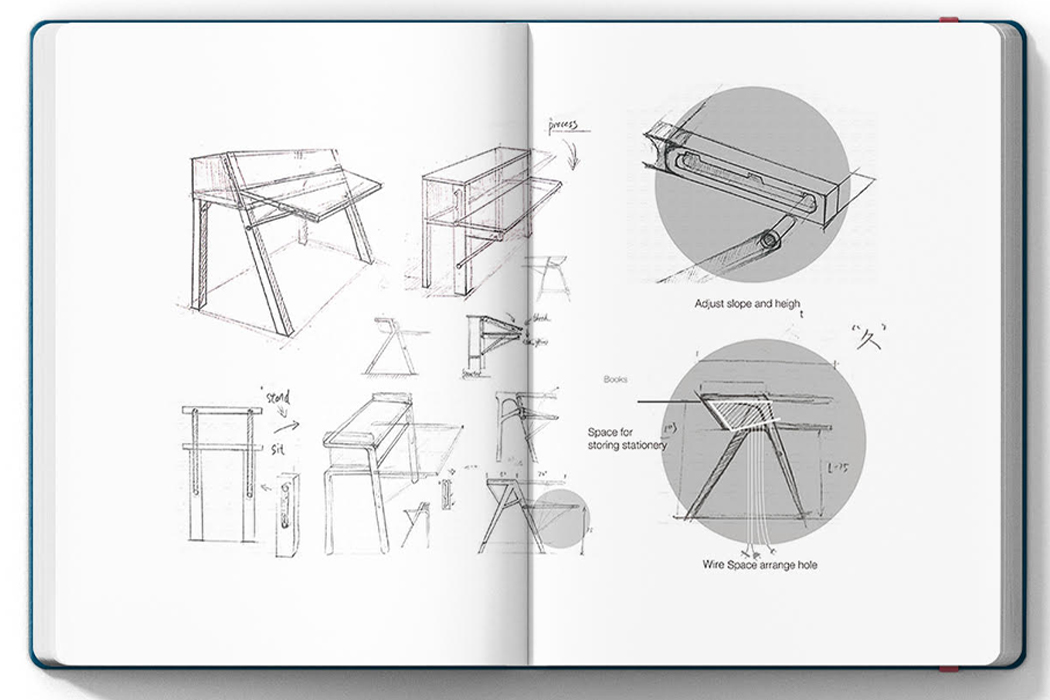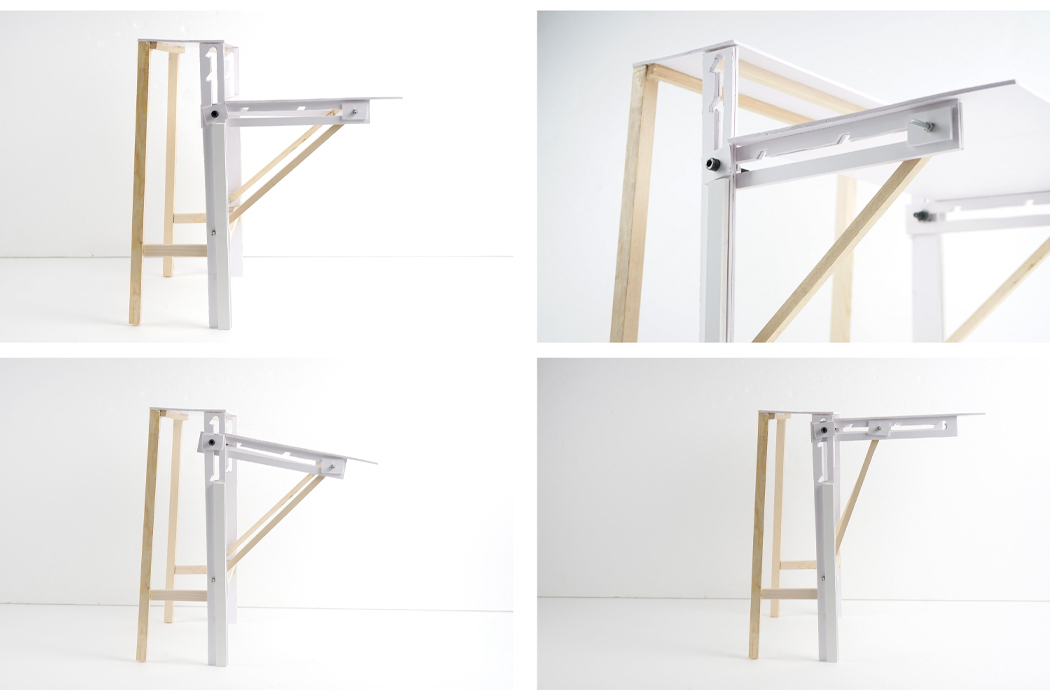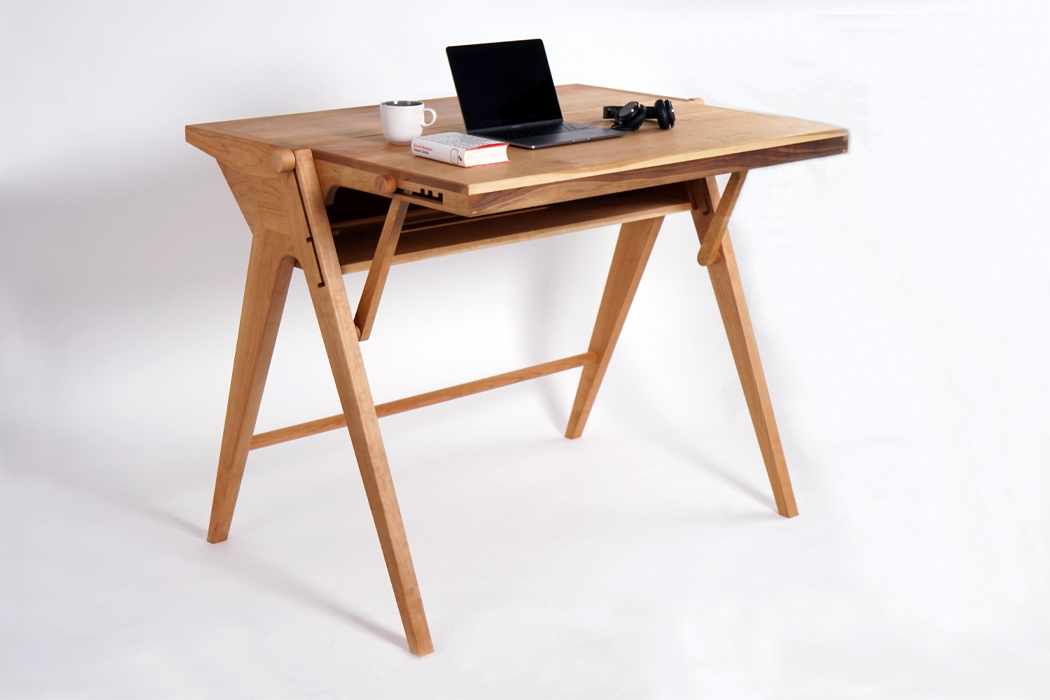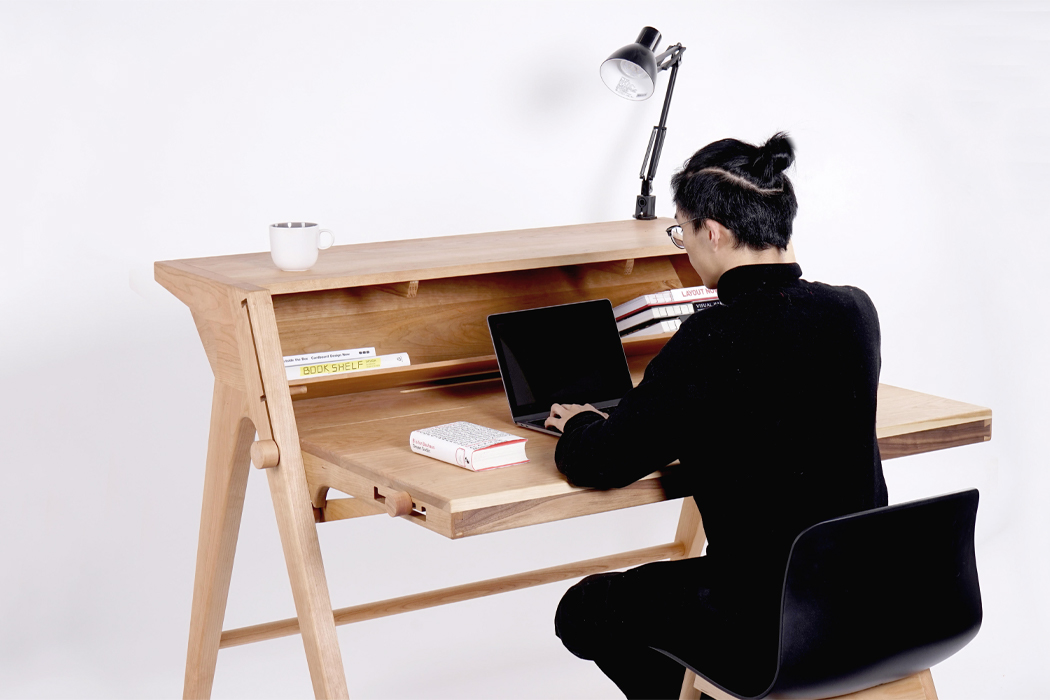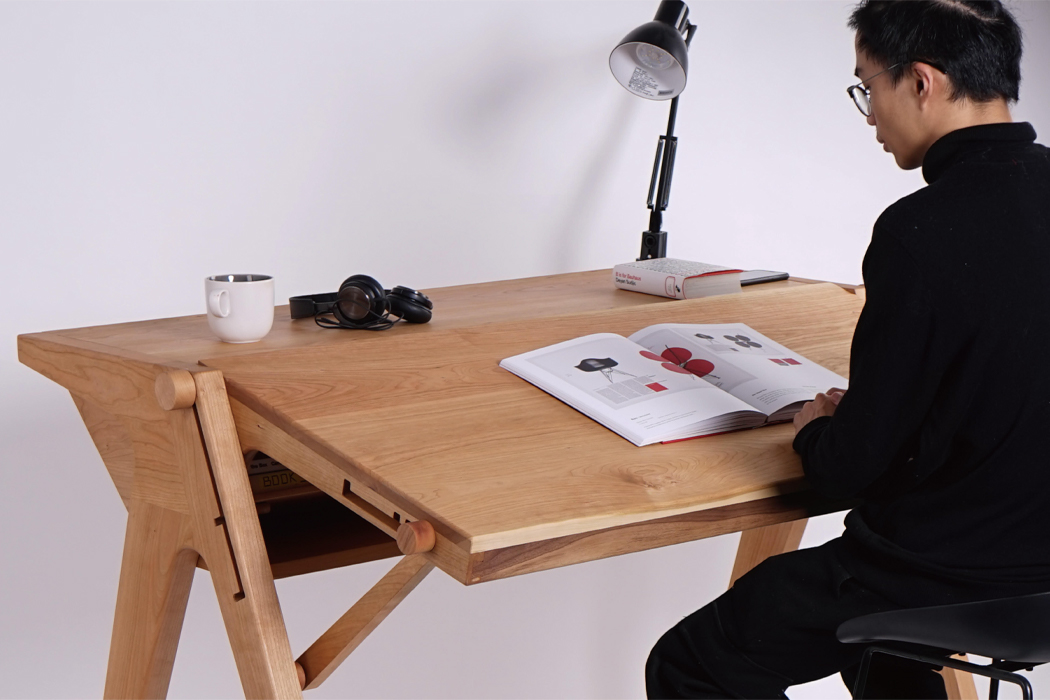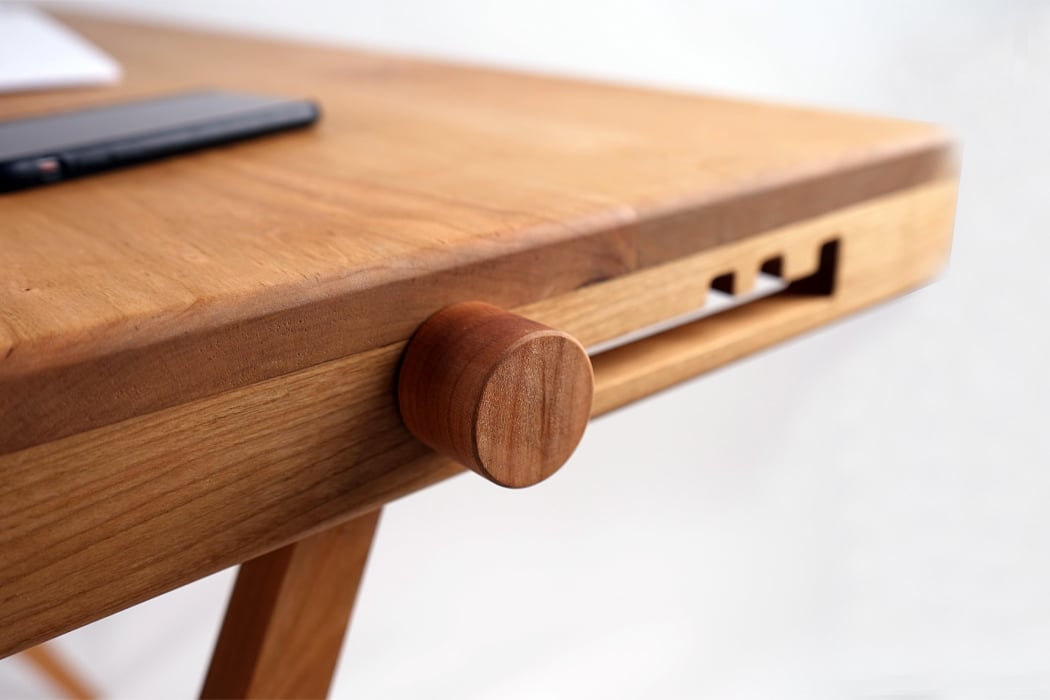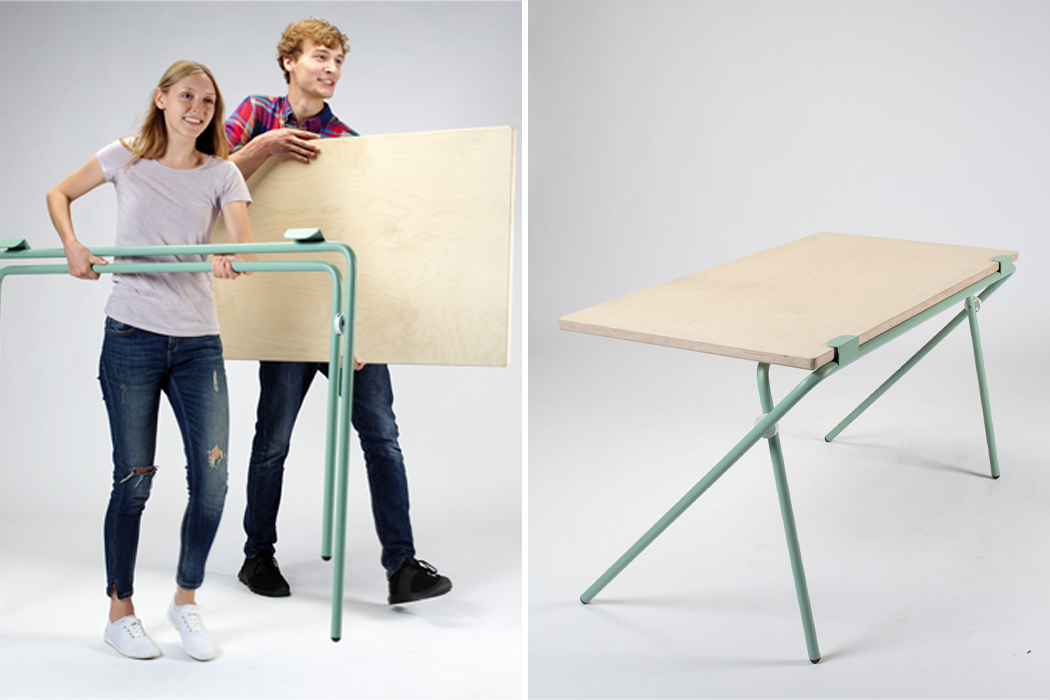
Tables are workstations, creativity hubs, brainstorming posts, and landing strips for storing everyday items. The multifaceted personality of the table is what makes them so versatile and yet so limiting– a dining room table cluttered with unread mail and stacks of papers can’t also be used for dining unless you want dried-up tomato sauce crusted over onto your assignment that’s due tomorrow. To provide a table that’s collapsible, portable, and adaptable to any working scenario, Yelim Kim, along with Alissa Arends and Leon Bucher created Plato, or “Fold It,” a table devoted to the daily working efforts of students and workers alike.
Plato is comprised of only two parts: a wooden desktop and a folding steel pipe. The foldable steel pipe enacts a hinged folding mechanism that allows its legs to recline and create a ledge with two pipes on which the wooden desktop can rest. Two steel clamps welded to fit the width of the wooden desktop are located on both ends of the steel pipes for the tabletop to securely latch onto. The easy assembly of Plato allows the foldable table to be used anywhere additional table space is needed.
Then, when the work is all finished, Plato’s tabletop can be dislodged from the welded steel clamps and transported or stored away for future use. The durability and solidity of Plato’s steel clamps allow weight to be evenly distributed across the tabletop and give Plato a simple, minimal structure, requiring no tools or hardware for assembly. Created for students and workers alike, Plato, or “Fold It” is a table designed for those late-night brainstorming sessions or post-presentation brunches.
Designer: Yelim Kim, Alissa Arends, and Leon Bucher
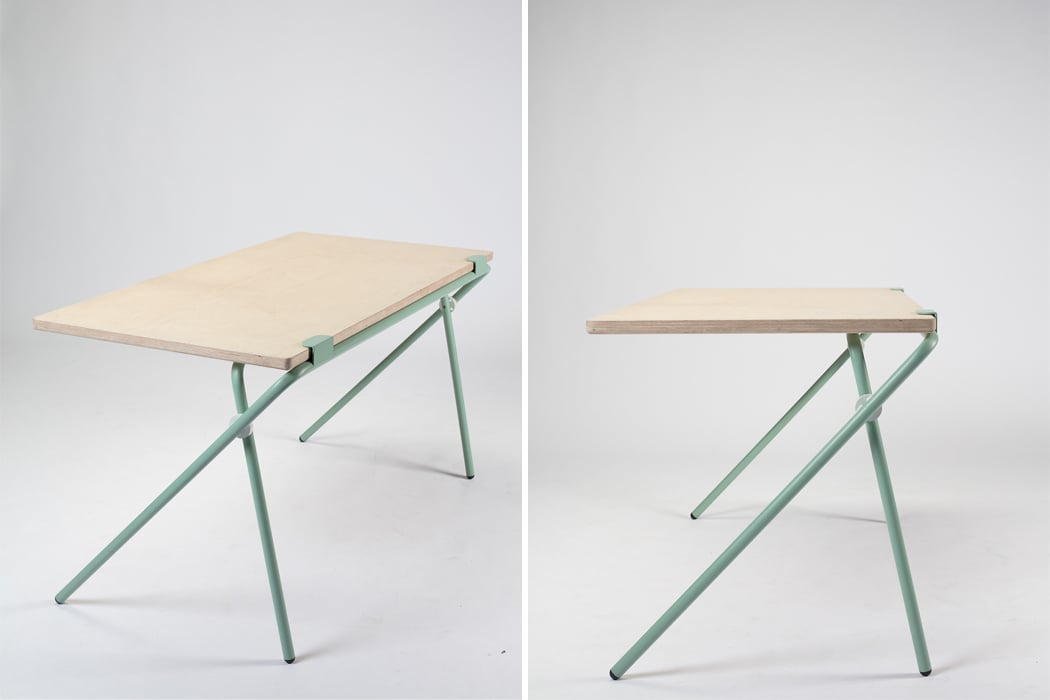
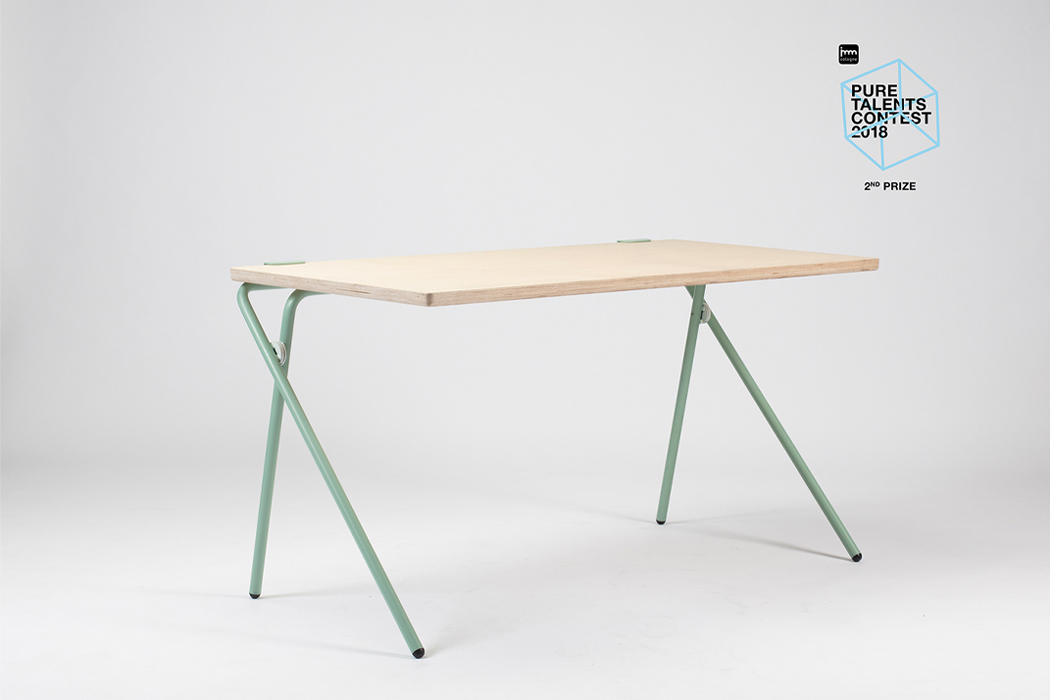
The simple, minimal design of Plato enhances its adaptability and makes it easy to dismantle and bring with you anywhere.
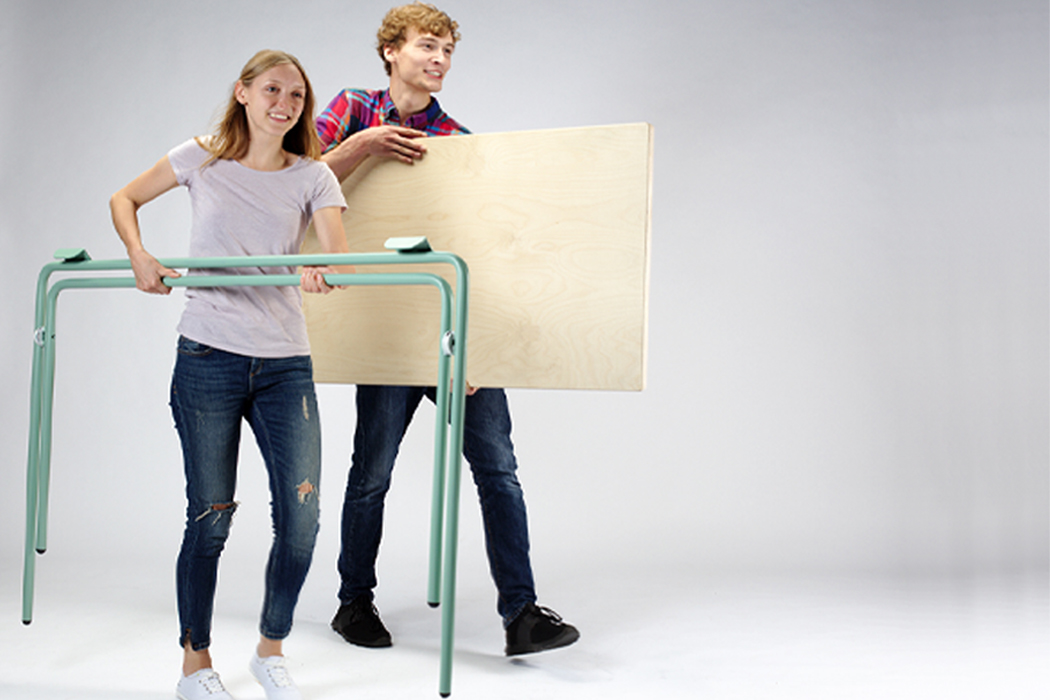
Comprised of only two parts, Plato is manageable to carry and turn into new workstations.
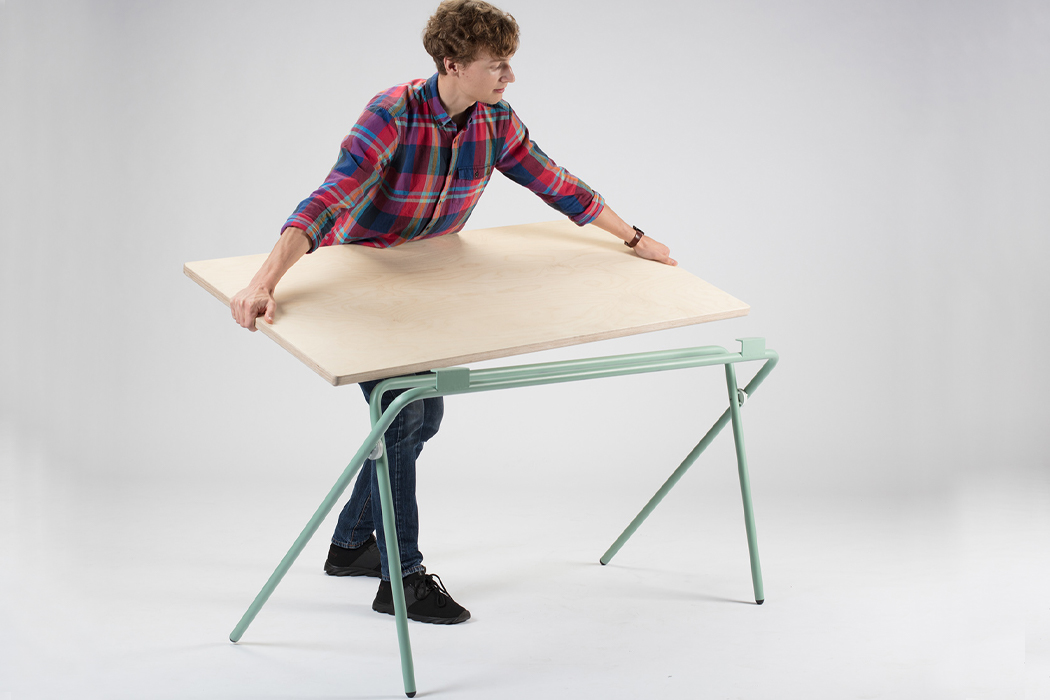
Two welded steel clamps provide a secure socket for Plato’s tabletop to lodge into.
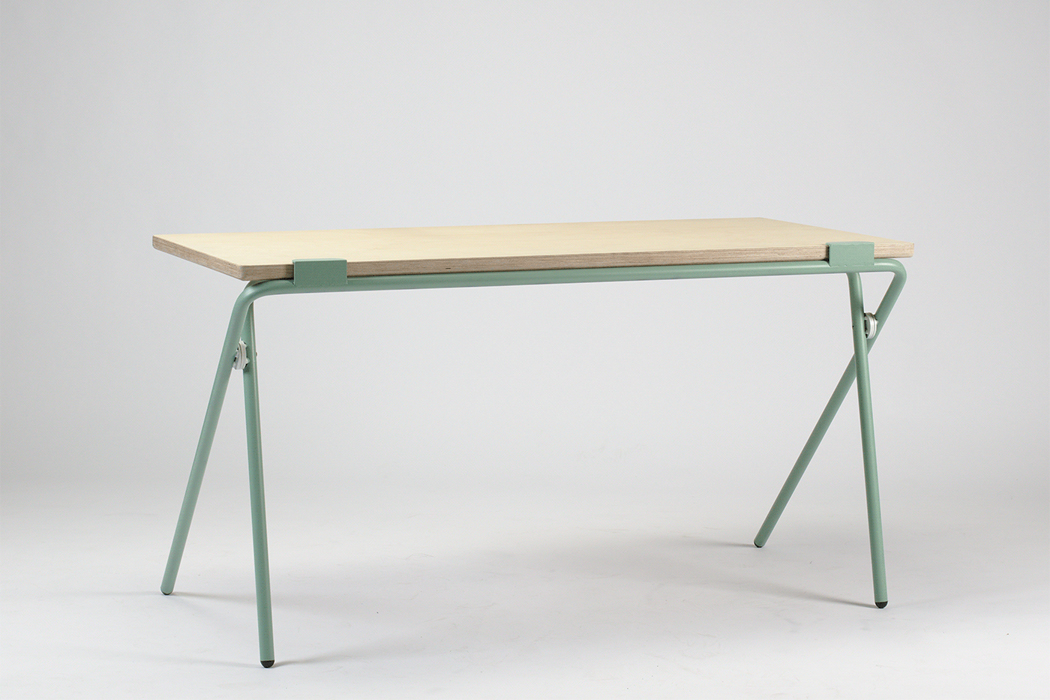
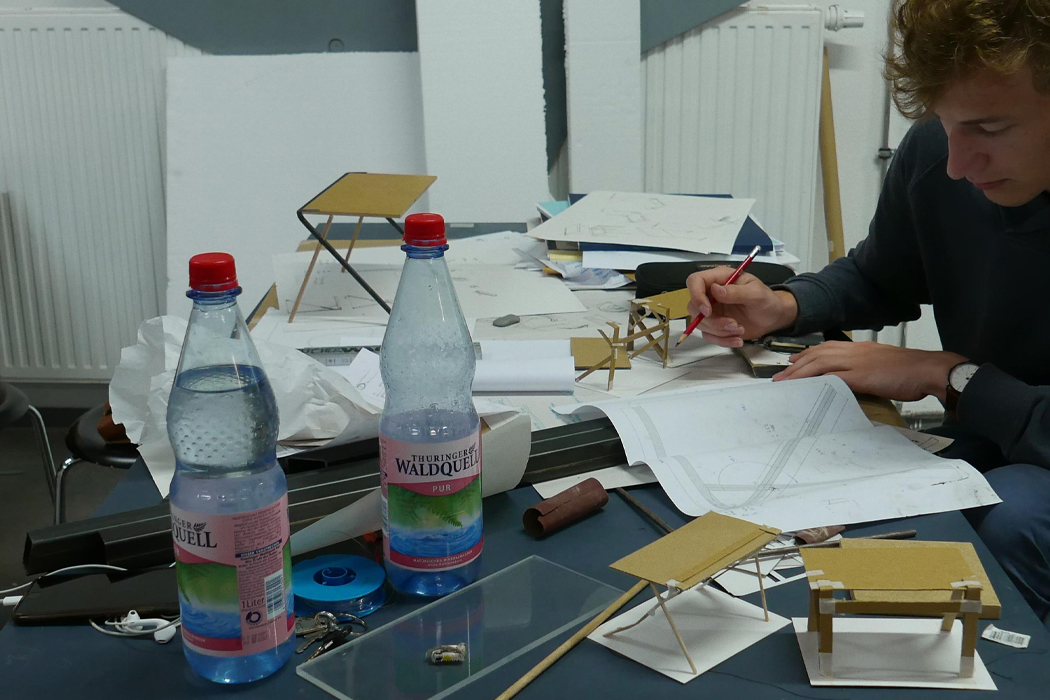
Following multiple ideations, Plato’s collapsible form was achieved through miniature prototypes.
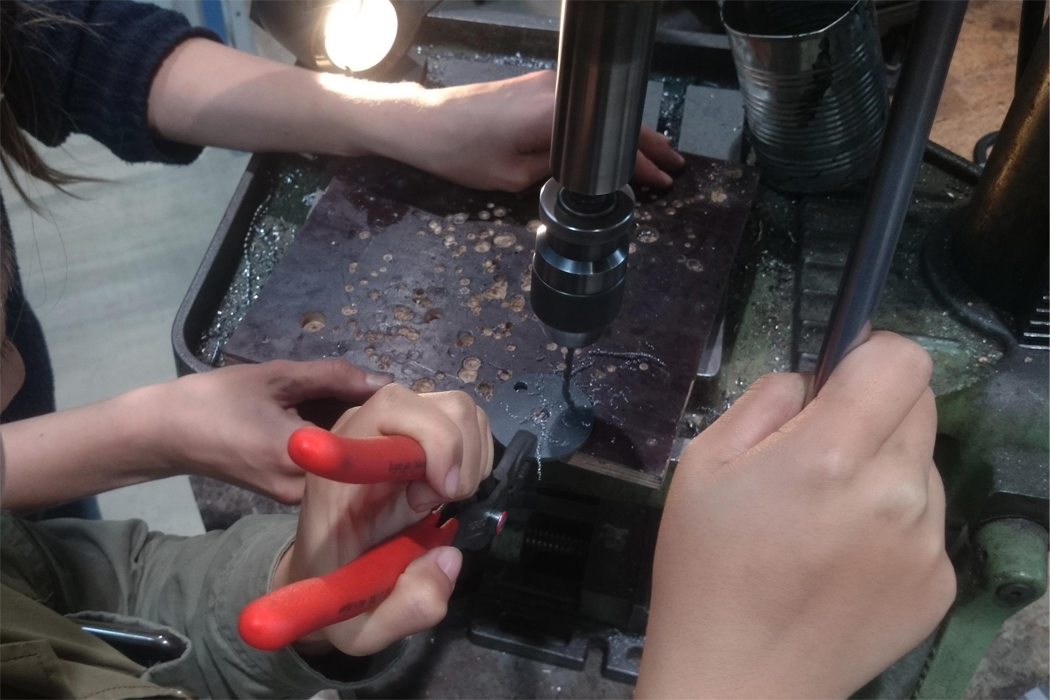
Plato’s steel pipes were welded to accurately and evenly distribute weight across the tabletop’s surface.
